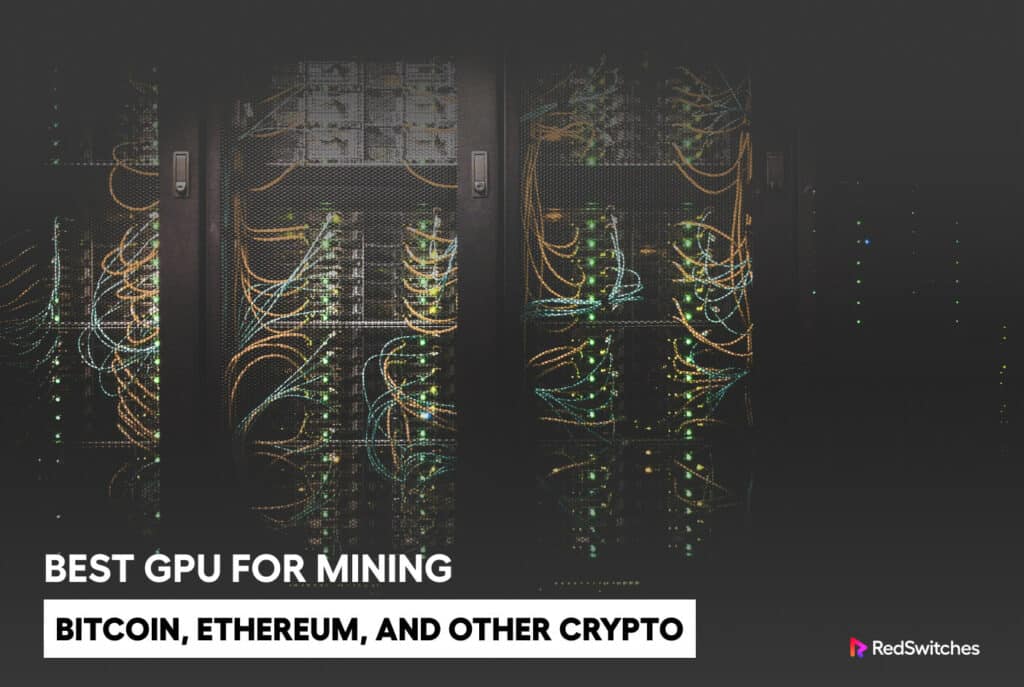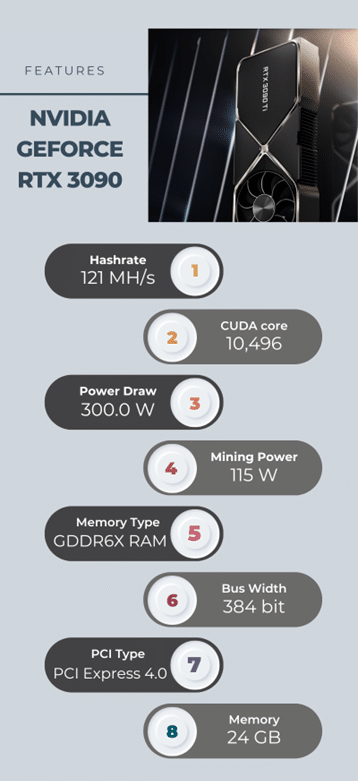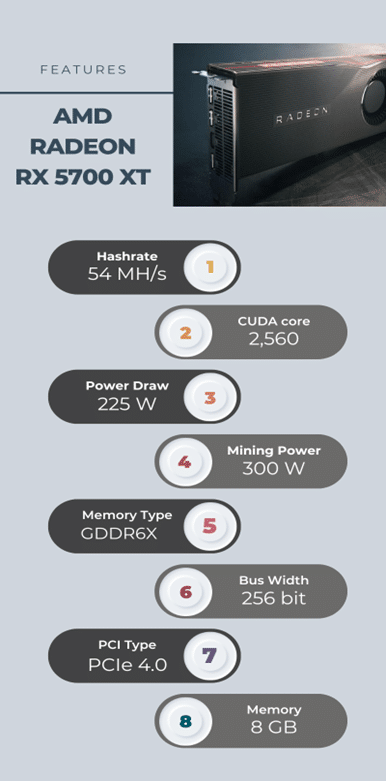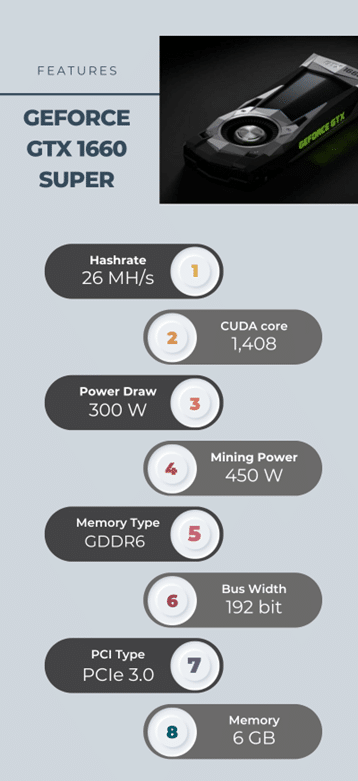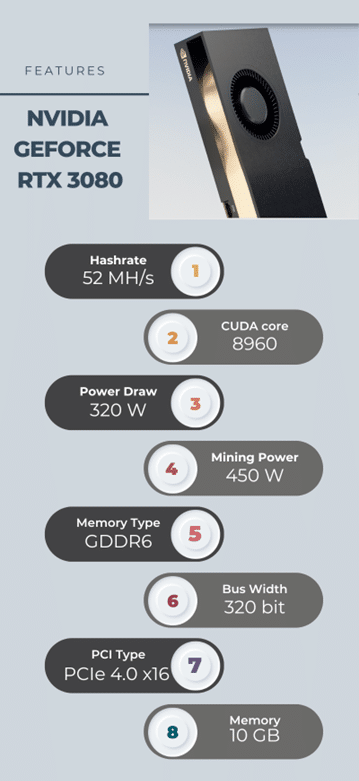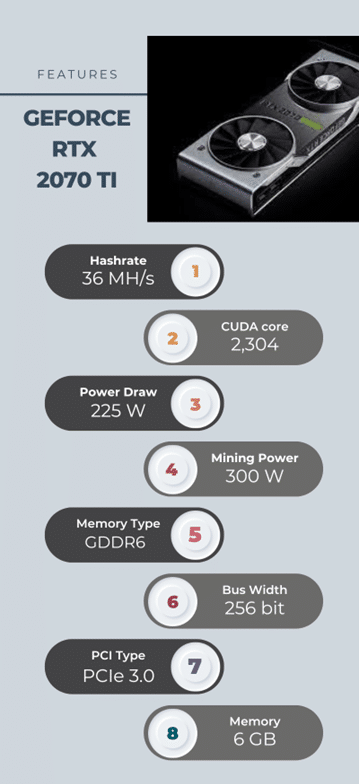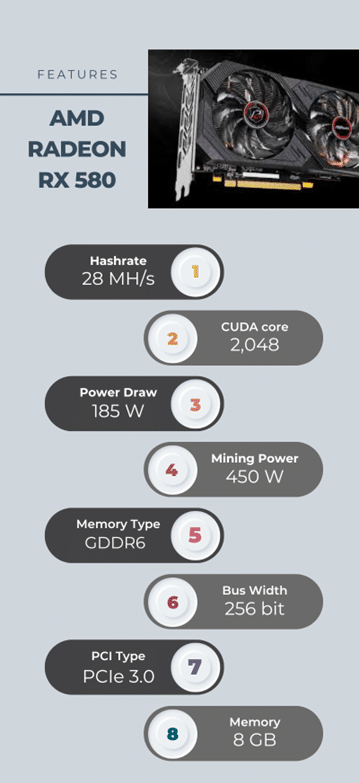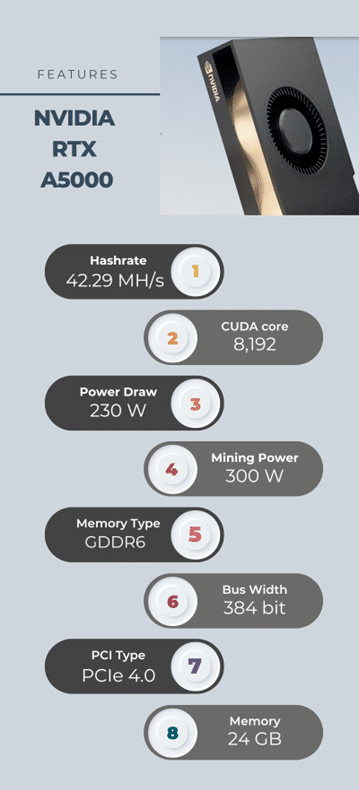As of March 2023, there was an increase in cryptocurrencies from 12,000 in 2022 to 22,900. These cryptocurrencies include Bitcoin (BTC), Ethereum (ETH), and altcoins such as USD coin (USDC), Binance USD (BUSD), and more. With this increase, many users seek the best GPU mining ways to profit from the crypto market. One popular method is buying and selling on exchange markets. Alternatively, you could become a miner if you don’t wish to trade cryptocurrencies.
Crypto mining is a way of acquiring cryptocurrencies by solving cryptographic equations. Successful mining operations add to the existing coin supply. Asides from gaining more coins, mining is an essential process to Bitcoin’s security. Mining cryptocurrencies can occur in several ways. CPU mining was the first mining method in Bitcoin’s early days. Mining became more complex, and Graphics Processing Units (GPUs) were rescued. The best GPU mining is inexpensive and more flexible than the third mining method with the Application-Specific Integrated Circuit (ASIC) hardware.
Not all computers suit crypto mining, as the process is quite intensive. To avoid system crashes, most users mine cryptocurrencies using GPU. While GPUs have different specifications and profitability, which can deliver a seamless mining process? This guide will show you the best GPUs to mine with.
Table of Content
- Understanding Crypto Mining and The Role of GPU
- Factors to Consider When Choosing a GPU for Mining
- Best GPU Options for Mining Bitcoin, Ethereum, and Other Crypto
- Why Choose RedSwitches for Your GPU Mining Needs
- Making the Right GPU Choice for Crypto Mining
- FAQs
Understanding Crypto Mining and The Role of GPU
What is Crypto Mining?
Crypto mining is a transactional process that involves cryptocurrency gaining by solving computational equations. Digital coin mining occurs on a blockchain architecture that supports PoW (Proof of Work). The blockchain serves as the public ledger for digital transactions. The two popular architectures are Proof of Work and Proof of Stake. Bitcoin and Ethereum used proof of work until September 2022, when Ethereum transitioned to proof of stake.
Proof of Work validates transactions by a network of miners. However, participants who place ether as collateral validate in proof of stake. Mining with PoW is competitive due to the high number of miners. PoW thereby consumes higher energy than Proof of Stake.
What is a Blockchain?
A blockchain records digital items, cryptocurrencies, and transactions at any time. It contains blocks of chained data, usually transactions that become a part of the ledger. Each blockchain user has an account that they only can access. When a transaction occurs, both parties have a private key that unlocks the encryption of their specific data. This way, transparent transactions can occur between users.
Blockchain is decentralized. Unlike the traditional banking system, which has all records in a central ledger, there is no major record for transactions. Simply put, your transaction does not need to pass through an authority before it can be completed. You may then ask, how are transactions verified and approved? Mining comes in. Blockchain uses cryptographic algorithms to verify transactions.
How Crypto Mining Works
You can liken the process of crypto mining to manual mining. While gold, silver, or diamond miners seek to find, crypto miners circulate new coins. Miners are tasked with solving complex equations in the form of cryptographic hashes.
A hash is a mathematical function that truncates an arbitrary length of data into an encrypted output of a fixed length. The mining process tasks miners to discover the hash function. The first miner to crack the code receives a reward in cryptocurrency.
A block, the smallest unit of a blockchain, is a store for transactions. The best GPU mining blocks have four main attributes:
- Data: An aggregate of transactions mined, validated, and arranged in the block.
- Previous hash: It stores the value of the hash of a previous block linking one block to another.
- Nonce: A random value that varies the output of a hash function. Each block is required to generate a hash value, and the nonce is the attribute that causes that hash value.
- Hash: the value obtained by passing the data, previous hash value, and the nonce through the mining algorithm.
These attributes form an unbroken chain of blocks that leads back to the first block. The link makes it easy for each user to quickly verify the blocks’ validity.
This procedure is used for mining Bitcoin and Ethereum mining. They have three primary purposes; adding new data blocks to the chain, leading to more circulation coins, and validating transactions to prevent fraud.
What is a GPU?
The initial intent of the GPU was for gamers to render graphics and 3D videos while playing computer games. However, it found a use in crypto mining in 2010. Technavio predicts GPU’s contribution to the global cryptocurrency mining hardware market will increase at a CAGR of 11.35% between 2022 and 2027.
Mining with GPU is a process that uses specialized graphics card cores to solve crypto equations. The best GPU for mining crypto will have properties that make them suitable for cryptocurrency mining. For instance, GPUs have many Arithmetic Logic Units (ALU), making them more efficient for mathematical computations. For this reason, miners prefer GPUs as they perform similar, repetitive, resource-intensive tasks faster with multiple cores.
Role of GPU in Crypto Mining
GPU mining decodes different hashes repeatedly and changes one digit in each attempt. The GPU can use different hashing algorithms to translate random-size data to a fixed-size hash. These algorithms shrink data to a smaller size to easily solve the different computational problems. They also keep data secure and verified. The common hash algorithms used by for the best GPU mining include:
-
SHA-256 algorithm
The National Security Agency (NSA) and the National Institute of Standards and Technology (NIST) developed secure hash algorithm 256 (SHA-256). Its encrypted data output is always 256 bits long, which secures the transaction network from fraud. The best GPU for bitcoin mining utilizes this algorithm. With SHA-256, miners must convert the 256-bit hash into a 64-character output. The first miner to achieve this receives the reward.
-
Scrypt Algorithm
Colin Percival, a Canadian computer security researcher, developed the Scrypt algorithm. It is faster and more efficient than the SHA-256. Encryption in Scrypt is a password-based key derived from different random numbers to prevent custom hardware attacks. The Scrypt has a record time of two and a half minutes for block generation, with the hash rate measured in kilo hashes (KH/s). It is used for Litecoin, Dogecoin, and Bismark.
-
Ethash Algorithm
Just as Bitcoin uses SHA-256, Ethereum, Ethereum Classic, and Expanse blockchains use Ethash making Ethereum mining ASIC-resistant. The Ethash algorithm was developed as an improvement on the previous Dagger-Hashimoto algorithm. One of the needs of Ethash is sufficient RAM, as it consumes large amounts of bandwidth. Mining is difficult as a result. Ethash measures the hash rate in megahashes (MH/s).
-
X11 Algorithm
X11 uses eleven different hashing algorithms, as opposed to one by others. It was implemented in the Darkcoin protocol in 2014. Miners have the best GPU mining experience as it is an efficient mining algorithm. There is a top-level transactional security with X11. Also, it consumes less energy and computing power. X11 measures the hash rate in megahashes (MH/s)
GPUs require top hardware and software materials for the best crypto-mining gpu. One of GPU’s software is the Claymore Miner. Claymore software is specific to Ethereum. It is built with a dual Ethereum miner that allows two similar algorithms without altering the hash rate. Other software are the WildRig Multi Miner and KawPow Miner. While the WildRig Multi Miner software focuses on modern AMD GPUs, KawPow is incompatible with AMD GPU devices.
GPU vs CPU
Before GPUs, CPUs could mine cryptocurrencies. CPU mining uses a processor’s cores to validate crypto transactions and create new coins. However, they were less strong than GPUs. Miners now choose GPUs instead of CPUs because of the following:
-
Parallel Processing
A CPU has to perform its various tasks using sequential serial processing. On the other hand, GPUs break complex problems into multiple tasks and work them simultaneously. This significantly reduces the time it will take to perform these operations.
-
Multiple ALUs
While a CPU usually has one ALU per core, GPU has as much as 1000 ALU per card. The more the ALU, the higher the hash rates, which subsequently increases its operational speed.
-
High Performance
GPUs have more processing cores and higher memory bandwidth than CPUs. The best GPU mining hardware performs at a higher rate and efficiency. For example, NVIDIA GPUs can perform over 100 teraflops of computation beside the 1 teraflop performance of Intel CPUs.
GPU Mining Pools
You could mine cryptocurrencies as a solo miner, but you could also join GPU mining pools. GPU mining pools consist of groups of the best GPU miners who combine their computing resources to increase their chances of cracking cryptographic equations. When a mining pool succeeds, each miner receives a reward proportional to the resources contributed. Miners are not obliged to stay with a pool; they can change pools whenever needed.
Joining a mining pool has advantages, including more stable income, reduced earnings fluctuations, and a lower need for expensive hardware. It has disadvantages, including reduced total earnings due to reward sharing. There could also be the risk of central control by the pool operator, hidden fees, or transaction costs. While there are many crypto mining pools, joining official mining pools is best. Official mining pools roll out frequent upgrades, updates, and regular technical support.
Cloud Mining
Cloud mining is one of the best GPU mining methods that allows you to mine digital coins without owning mining hardware. With this method, you rent out another miner’s mining rig and receive a profit cut. On the other hand, you can rent your mining rig to other users, if you have one, to cut costs. That, however, comes with a reduced profit.
Factors to Consider When Choosing a GPU for Mining
Different GPUs may have similar or differing features. When buying a GPU, one thing to remember is productivity, efficiency, and longevity. What specific factors should you look out for?
Hash Rate
The hash rate parameter tells the computational power used during crypto mining. It is the count of the number of hash operations per second. In crypto mining, the mathematical calculations used to generate coins are known as hash operations. The hash rate, also known as hashpower measures is measured in hash per second (H/s), kilo hash per second (KH/s), megahash per second (MH/s), gigahash per second (GH/s), or terahash per second (TH/s). The best GPU mining cards have measures starting from MH/s, as current hashrates are in billions of hashes per second. CPUs, on the other hand, measure hash rates in kilo hash per second (KH/s).
Generally, a miner with higher hash operations at a given period is likelier to solve the complex mathematical problem and earn the reward. The process is typical of the Proof of Work blockchain method. The mining difficulty of a particular cryptocurrency usually increases. When this occurs, miners need an equal computational power increase to maintain the same level of profitability. Simply put, miners need a higher hash rate to stay at the winning edge in the mining market.
The profitability of a GPU depends on the speed at which it executes operations. Each GPU has benefits and downsides in mining. While some will consume more power but with better profitability, others will have less power with delayed profitability. The best GPU mining hardware enables an increasing hash rate, which in turn increases your level of competitiveness and profitability.
Hashrate can also be a measure of the level of security of a blockchain. The information on the number of operations per second allows miners to judge a blockchain’s level of reliability and decentralization.
Power Consumption
Crypto mining consumes a high power level, so it becomes necessary to consider the GPU’s power efficiency. In choosing the best GPU for mining, confirm that their power consumption aligns with your mining operation’s energy costs. Look for a GPU with a high hash rate while consuming less power. Such GPUs will help you increase profitability while minimizing operating costs.
The power efficiency measured in hash rate per watt, H/W, gives you an idea of the amount of hash rate a GPU can achieve per unit of power consumption.
Your energy costs include electricity costs. Recall that GPUs were not initially made for mining; some would consume excessive electric power rather than their hash rate. In addition to increased profitability, the best crypto mining GPUs consume low power, reducing heat output and increasing the GPU’s lifespan.
Price and Availability
GPU prices fluctuate considerably at different periods. It could be due to crypto prices, market demand, and production constraints. For example, high cryptocurrency demand can lead to shortages and inflated prices. So, when considering your options for the best GPU mining, check if the prices are within your budget and confirm their availability. You could also monitor market conditions to know when GPUs become available.
Sometimes, you may need to invest beyond your budget for better hash rates and power efficiency. Eventually, the investment will pay off in terms of profits. However, ensure that a high GPU’s cost correlates to high performance and energy efficiency before choosing.
Coin Mining Flexibility
The best GPU miners look out for coin mining flexibility before choosing a GPU. A good GPU should be able to mine different coins on different blockchain platforms. This flexibility places a GPU at higher profitability chances.
A typical example occurred when ETH moved from PoW to proof of stake (PoS) algorithms. Miners were able to mine other coins with GPUs easily.
VRAM (Video RAM)
GPU’s VRAM is essential for memory-intensive cryptocurrency mining. Since GPU carries out operations simultaneously, it requires a significant amount of VRAM to be effective in mining. Mining cryptocurrencies, like Ethereum, may require at most 3GB of RAM. Other cryptocurrencies, like Zcash, may require even lesser memory value GPUs. The evolution of cryptocurrency with new algorithms brings about varying VRAM requirements. VRAM serves as the buffer which stores data and intermediate results during the mining. The higher the VRAM, the higher the ability of a GPU to handle more complex mining algorithms efficiently.
Other factors to look out for include;
- Resale value: In choosing a GPU, ensure it will retain its great performance for a long time. This way, you can resell at a reasonable rate when prices drop.
- Cooling system: Evaluate the cooling system and ensure that it is durable throughout the lifespan of the GPU. The best GPU mining hardware experiences overheating less frequently.
Consider all these factors before making a long-term GPU purchase decision.
Best GPU Options for Mining Bitcoin, Ethereum, and Other Crypto
1. NVIDIA GeForce RTX 3090
Price: $3,499.99
NVIDIA GeForce RTX 3090 launched in 2020. The card measures 336 mm x 140 mm x 61 mm and features a triple-slot cooling solution. The GeForce RTX 3090 mines twice as fast as other cards but is three times more expensive. This Graphic card has 24GB GDDR6X memory capacity exceeding the usual 16GB. The high memory of this graphic card, 10,496 CUDA cores, and a whopping hash rate of 121 MH/s make it a top option for the best GPU mining. It lacks LHR (Lite Hash Rate) locking, which means you can mine Ethereum at a full 121 MH/s speed.
Pros
- GeForce RTX 3090 analyzes and reduces input lag
- It is excellent for gaming at 8K HDR.
- It produces a lot of cryptocurrencies swiftly.
Cons
- RTX 3090 consumes tons of power
- It experiences regular overheating issues
2. AMD Radeon RX 5700 XT
Price: $399.99
The AMD Radeon RX 5700 series was launched by AMD in 2019. It uses a FinFET (fin field-effect transistor) technology with few electronic components that reduce power consumption. It features 64 ROPs, 160 texture mapping units, and 2560 shading units. A 256-bit memory interface connects the paired 8 GB GDDR6 memory. RX 5700 XT can mine ETH, RVN, ETC, and BEAM. It is a dual-slot card with a max power draw of 225 W. The card measures 272 mm x 111 mm x 36 mm, with a dual-slot cooling solution.
Pros
- AMD Radeon RX 5700 consumes low power.
- It is highly profitable.
Cons
- It is expensive.
- Configuration is slow.
3. NVIDIA GeForce GTX 1660 SUPER
Price: $200
NVIDIA GeForce GTX 1660 SUPER graphics card features a 1544 MHz base clock and 6GB 192-bit GDDR6 memory. Some shading units were disabled to reach the product’s target shader count. It features 48 ROPs, 88 texture mapping units, 1408 shading units, and a high memory bandwidth of 336GB/s. It gives one of the best GPU mining experiences, especially for mining Bitcoin. At a power draw of around 125W, it has a hash rate of just 26MH/s. Its low cost makes it suitable for building a rig of multiple GPUs.
Pros
- The GTX 1660 is 50% faster than the previous 16-series generation.
- It is more affordable.
Cons
- It consumes more power.
- It is not always available in the new market.
4. ASUS TUF Gaming NVIDIA GeForce RTX 3080
Price: $699
NVIDIA GeForce RTX 3080 was released by ASUS in 2020. It has 10 GB GDDR6 memory paired with the GeForce RTX 3080 using a 320-bit memory interface. This graphic card operates at a frequency of 1440 MHz and increases up to 1710 MHz.
It is a dual-slot card with a dual cooling solution and measures 285 mm x 112 mm x 40 mm. It sets a benchmark for mining, offering an impressive speed of 75 MH/s. You can enhance this to 93 MH/s with overclocking. It is the best GPU for mining Ethereum. It maintains a cool temperature of 65 degrees Celsius during overclocking.
Pros
- Geforce RTX 3080 has excellent performance.
- It is fast.
Con
- RTX 3080 is expensive.
5. NVIDIA GeForce RTX 2070 TI
Price: $690
NVIDIA GeForce RTX 2070 is from previous card generations. However, it is one of the best GPU mining cards for Ethereum, ZCoin, Ravencoin, Grin, and others. The RTX 2070 has a memory of 8GB and a power consumption of 225 W, which can attain up to 40 MH/s for the hash rate.
Pros
- GeForce RTX 2070’s performance is moderate.
- It has a high Resale value.
Con
- It mines cryptocurrencies 25% slower than previous generations.
6. AMD Radeon RX 580
Price: $299
AMD’s RX 580 was launched in 2017. In 2023, it is still popular as the best GPU mining card. It consumes high power at 31 MH/s while mining. It is the best GPU for mining if you have free electricity. RX 580 was available in two versions (4 GB and 8 GB). However, the 4GB version was discontinued. The return on investment is slow. It suits cryptocurrencies, including Ethereum, Ethereum Classic, Metaverse, and Expanse.
Pro
- AMD Radeon RX 580 has a high performance at a reasonable price.
Cons
- It is slow.
- It consumes tons of power.
7. Nvidia RTX A5000
Price: $3,350
RTX A5000 was released by NVIDIA in 2021. It features 96ROPs, 256 texture mapping units, 8192 shading units, and some disabled shading units. It was built on Nvidia’s Ampere architecture, featuring 8192 CUDA cores and 24 GB GDDR6 memory connected using a 384-bit memory interface. The operating frequency of 1170 MHz can be boosted up to 1695 MHz. RTX A5000 is a dual-slot cooling solution with dimensions 267 mm in length and 112 mm in width. In addition, it supports Nvidia NVLink, which allows a memory expansion of up to 48 GB.
Pros
- RTX A5000 has a memory capacity of up to 48GB.
- Its mining performance is excellent.
Con
- It is quite expensive.
- It consumes much power and requires cooling to prevent overheating.
Why Choose RedSwitches for Your GPU Mining Needs
Choosing the best GPU mining hardware for solo mining or building a crypto mining rig depends on different factors. For instance, the cost, performance, and availability differ at a certain period. Thankfully, a reliable service provider like Redswitches has all the information you need regarding GPU purchases.
We stand out as we have a robust power infrastructure with sufficient capacity to handle your mining electricity demands. Remember that efficient cooling is essential to maintain optimal GPU performance and prevent overheating. We work with your budget to find the GPU hardware that fits without compromising performance. Also, our chat box is always open to provide timely assistance when needed.
In addition, we offer regular performance checks, monitoring to help you keep track of your mining operation’s performance and quickly address any potential issues. Feel free to contact us today for the best GPU for mining crypto.
Making the Right GPU Choice for Crypto Mining
In conclusion, choosing the right GPU for crypto mining is essential as it directly impacts the profitability and efficiency of your mining operation. Whether you are a solo miner or a part of a mining pool, the knowledge of the best GPU mining hardware is important.
Crypto mining with GPU is a transactional process that involves solving computational equations using Graphic cards. Although it is not the only crypto-mining method, it remains the best based on its ability to perform simultaneous operations. The best GPU for mining has multiple ALUs, among other features, that allow for a better performance during mining.
This guide has shown you the factors to look out for; hash rate, power, pricing and availability, consumption, coin flexibility, and VRAM capacity. These factors are present in our top 7 list of GPU mining cards. NVIDIA GeForce RTX 3090 comes top with a whopping hash rate of 121 MH/s at a low mining power of 115 W.
Making a well-informed choice assures you of increased returns. Lastly, careful research and staying informed about the latest trends and developments in the mining industry will help you make the best choice for your specific needs. Remember, Redswitches is your go-to option for the best GPU mining for cryptocurrencies.
FAQs
Q1. Which GPU is best for crypto mining?
While there are several GPUs for crypto mining, AMD RX 5800 XT is one of the best. It delivers smooth frame rates at high resolutions in games, and in mining, it has a high hash rate, delivering an excellent performance.
NVIDIA GeForce RTX 3090 is also among the best, with a high hash rate of 121 MH/s and over 10,000 CUDA cores for crypto mining. It features a whopping 24GB of GDDR6X VRAM for the highest performance levels for mining.
Q2. What is the most powerful GPU for mining Ethereum?
NVIDIA GeForce GTX 1080 is one of the best GPUs for mining Ethereum. It is a cost-effective GPU, with a hash rate of 38 MHash/s while consuming 150 Watts of power. This feature makes it the most powerful for Ethereum mining.
Q3. Which crypto is easiest to mine with a GPU?
Thousands of cryptocurrencies can be mined with GPU mining easily. Some include Bitcoin, litecoin, monero, raven coin, and Ethereum.
Q4. What is the best crypto for GPU mining in 2024?
Bitcoin, Monero, Ravencoin, and ZCash are among the best cryptocurrencies you can mine in 2024. If you have the capital, Bitcoin is your best bet. If not, you could mine Monero or ZCash on a budget.
Q5. What is the most profitable GPU miner?
Some of the most profitable GPUs for mining cryptocurrencies include NVIDIA GeForce RTX 3060 Ti, RTX 3070, RTX 3080, AMD Radeon RX 6000, RX 6700, RX 6800 XT, and RX 6900 X. These GPUs have high hash rates, high energy efficiency, and profitability. However, keep in mind that cryptocurrency mining is a rapidly evolving space. So, keep in touch with the market trend and new updates.
